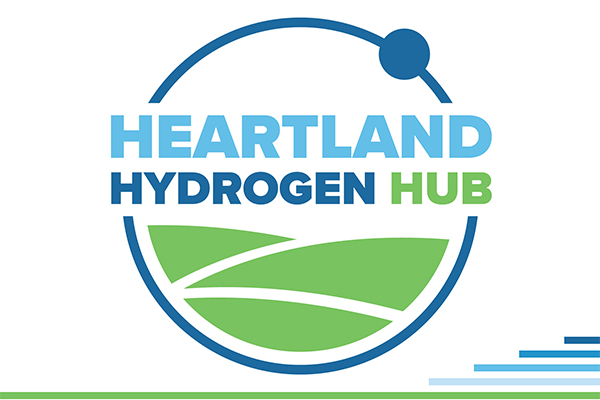Hydrogen

Nature's Fuel of the Future
The invisible gases that surround Earth and trap its heat are known as greenhouse gases (GHGs). Carbon dioxide, which is produced when carbon-containing materials are burned, makes up nearly 80% of GHGs. In contrast, when used as a fuel for combustion or in a fuel cell, hydrogen produces only water as an emission. As the demand for cleaner energy solutions continues to grow, hydrogen will be a key part of the future energy economy. The EERC stands at the forefront of hydrogen research, specializing in advancing fuel cell technology, hydrogen production methods, and the use of ammonia as a hydrogen carrier. With a focus on the entire hydrogen supply chain, we aim to pioneer advancements that catalyze a greener, more efficient energy landscape.
Production Methods
Our research is revolutionizing hydrogen production through on-demand methanol electrolysis (ODME). Unlike traditional water electrolysis, ODME allows for the direct conversion of methanol to hydrogen at significantly lower voltages. This innovative approach eliminates the need for costly hydrogen compression and simplifies infrastructure requirements.
Additionally, the EERC's high-pressure methanol reforming process represents a significant breakthrough in hydrogen production. By utilizing a pump to pressurize methanol, we eliminate the need for multistage compressors, reducing capital and operating expenses. Demonstrated in a fully integrated small pilot plant at a capacity of 15 kilograms of hydrogen per day, our reforming technology offers a sustainable and economically viable solution.
Learn More About Our Electrochemical Research

Transportation and Storage
Energy storage is necessary to compensate for periods in which energy supply and demand do not balance. The U.S. natural gas system experiences major seasonal imbalances as winter heat demand and, to a lesser extent, summer electricity demand outstrips supply. Because of this, the EERC is researching the transportation of hydrogen through chemical carriers such as ammonia and its storage in saline and bedded salt formations.
Exploring alternative methods for hydrogen transportation, ammonia emerges as a promising energy carrier. With its high hydrogen density and emission-free combustion, ammonia presents an efficient solution for storing and transporting hydrogen. Our research extends to exploring novel storage solutions for hydrogen, including salt caverns. These subterranean storage facilities offer low cost, scalability, minimal environmental impact, and efficient management of large quantities of hydrogen.
Utility
The increasing demand for hydrogen in various sectors underscores its importance in the future energy landscape. From chemical production to fuel cells and combustion turbines, hydrogen plays a crucial role in decarbonizing industries and reducing emissions. We are dedicated to advancing hydrogen technology to meet the evolving needs of a sustainable future.
Learn More About Hydrogen
Hydrogen: Nature's Fuel
Has the Time for Hydrogen Arrived?
Featured Projects

Located in the heartland of the United States, its goal is to decarbonize multiple sectors in the region, including agriculture and industrial manufacturing, while producing clean hydrogen for end use in fertilizer and power generation.
